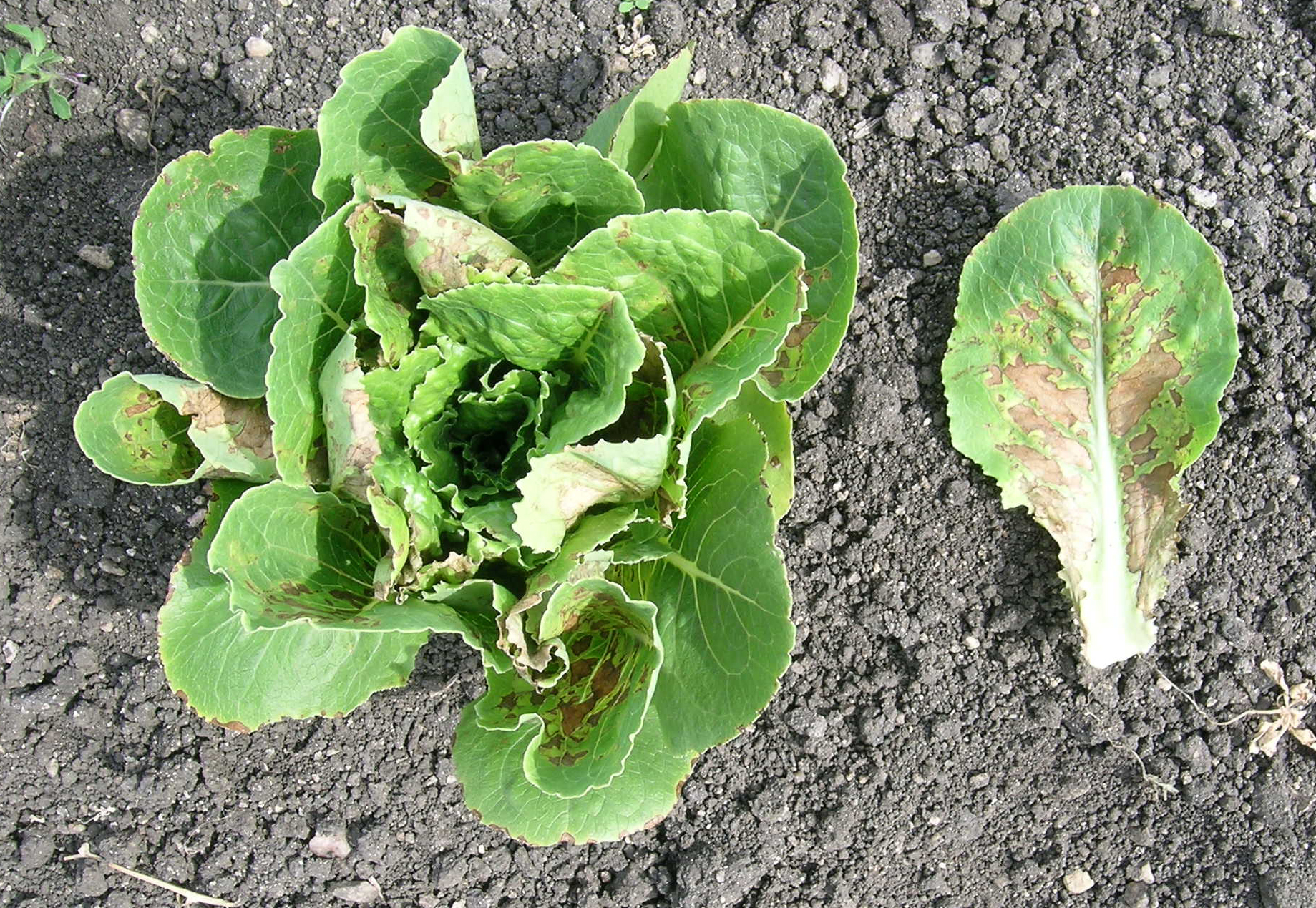
|
|
|
|

|
|||
|
|
|||
|
|
|||
|
What is lettuce dieback? This is a disease that has appeared in some romaine plantings
in southeastern Imperial County, California and Yuma, Arizona in past years. Lettuce
dieback occurs in other lettuce production regions in California as well. Initial
symptoms on infected plants consist of extensive yellowing of the outermost leaves,
with the younger inner leaves usually remaining dark green in color. Dead spots
on older leaves can develop into extensive areas of brown necrotic tissue. As the
disease progresses, plant stunting and death can occur. Rotted roots may also be
present, but whether this is caused by the pathogens or is a secondary issue is
not clear. Lettuce dieback is caused by the Tomato bushy stunt virus and the closely
related Lettuce necrotic stunt virus. The disease is primarily a problem on romaine
lettuce, although some green leaf, red leaf and butterhead cultivars can be affected
as well. To date, symptoms have not been observed in commercial plantings of crisphead
lettuce. Lettuce dieback is usually found in fields near rivers or low-lying areas
that drain poorly. High salinity and plant stress can enhance lettuce dieback symptoms.
The viral pathogens can be dispersed by contaminated soil and water and can survive
for a long period of time. No vectors for Tomato bushy stunt virus and Lettuce necrotic
stunt virus currently are known. Soil fumigation or crop rotation does not reduce
disease severity in subsequent plantings of susceptible lettuce varieties. Breeding
lines have been developed in California that have genetic resistance to lettuce
dieback.
To contact Mike Matheron go to: matheron@ag.arizona.edu.
|
|||
| Back | |||
|
For questions or comments on any of the topics please contact Marco Pena at the Yuma Agricultural Center.
|
|||
|
Home |
Cotton | Veggies |
Forages | Grains
| Citrus |
Crop x Crop Insects | Diseases| Weeds | Pesticides | Economics | News | Weather | Research | Photos | Contacts | General Info. Copyright © 2001 University of Arizona, College of Agriculture and Life Sciences Webmaster: Al Fournier (acis@ag.arizona.edu) |
|||

